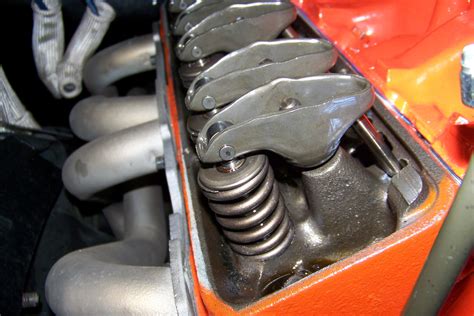Restore Your 350 Chevy's Roar: The Power of Valve Adjustment
The iconic rumble of a 350 Chevy small-block engine is music to many car enthusiasts' ears. But over time, even this legendary powerplant can lose some of its punch. One often-overlooked culprit? Incorrect valve adjustment. A properly adjusted valve train ensures optimal combustion, maximizing power, fuel efficiency, and that signature Chevy roar. This comprehensive guide will walk you through the process of restoring your 350's power through precise valve adjustment.
Why is Valve Adjustment Important?
Valve adjustment is crucial for maintaining the health and performance of your 350 Chevy. The valves, responsible for controlling the flow of fuel-air mixture into and exhaust gases out of the cylinders, need precise clearance to function correctly. If the clearance is too tight (too little lash), the valves can become bent or burn, leading to catastrophic engine failure. Conversely, if the clearance is too loose (too much lash), the valves won't fully open or close, resulting in reduced power, poor fuel economy, and a noisy engine.
Understanding Valve Lash and Adjustment Methods
Valve lash, also known as valve clearance, refers to the small gap between the valve stem and the rocker arm when the valve is closed. This gap is measured in thousandths of an inch. There are two primary methods for adjusting valve lash:
- Solid Lifters: These require regular adjustment, typically every few thousand miles, using feeler gauges to measure the gap. This is a more hands-on process.
- Hydraulic Lifters (Self-Adjusting): These automatically compensate for wear and tear, eliminating the need for frequent adjustments. However, they can still fail, necessitating replacement, rather than adjustment.
Your 350 Chevy likely utilizes either solid or hydraulic lifters, depending on the year and specifications of your engine. Consult your owner's manual or a reliable engine rebuild manual to determine which type you have. This knowledge is critical to determining the correct adjustment procedure.
How to Adjust Valves on a 350 Chevy with Solid Lifters
This section applies only to 350 Chevy engines with solid lifters. If your engine has hydraulic lifters, skip ahead to the next section.
Tools Required:
- Socket set
- Wrenches
- Feeler gauges
- Valve adjustment tool (optional, but helpful)
- Torque wrench
- Shop manual specific to your engine
Procedure:
- Safety First: Disconnect the battery's negative terminal.
- Access: Remove the valve covers.
- Identify: Locate the intake and exhaust valves for each cylinder. Your shop manual will provide diagrams.
- Rotate Engine: Carefully rotate the engine using a wrench on the crankshaft pulley until the piston for the cylinder you're adjusting is at top dead center (TDC) on the compression stroke. This ensures the valve is fully closed.
- Measure and Adjust: Insert the correct feeler gauge (specified in your shop manual) between the valve stem and rocker arm. Adjust the rocker arm adjusting nut until the feeler gauge slides with slight resistance. Tighten the lock nut securely.
- Repeat: Repeat steps 4 and 5 for each valve in the proper firing order.
- Reassemble: Reinstall the valve covers and reconnect the battery.
What if My 350 Chevy Has Hydraulic Lifters?
Hydraulic lifters are designed to self-adjust, simplifying the process considerably. However, there are still instances where issues might arise.
H2: How do I know if my hydraulic lifters need replacing?
If you're experiencing excessive valve train noise (ticking or tapping), low compression, or a noticeable loss of power, it may indicate a problem with your hydraulic lifters. They may be worn out, or there may be an internal leak causing them to fail to self-adjust properly. In this case, they need to be replaced, not adjusted.
H2: Can I add oil to fix noisy hydraulic lifters?
Adding oil to the engine will not fix noisy hydraulic lifters. While a low oil level can sometimes contribute to lifter noise, it's typically caused by a problem within the lifter itself, requiring replacement.
Maintaining Your 350 Chevy's Valve Train
Regular maintenance is key to preventing valve train issues. This includes:
- Regular oil changes: Use the correct weight and type of oil recommended in your owner's manual.
- Inspecting valve covers: Regularly inspect for any signs of leaks or damage.
- Checking for noise: Listen for any unusual noises emanating from the valve train.
By following these guidelines and performing regular maintenance, you can ensure your 350 Chevy's valve train continues to deliver years of reliable performance and that unmistakable powerful roar. Remember, consulting a professional mechanic is always recommended if you're unsure about any step of this process. This article provides guidance but cannot replace the expertise of a skilled mechanic.

